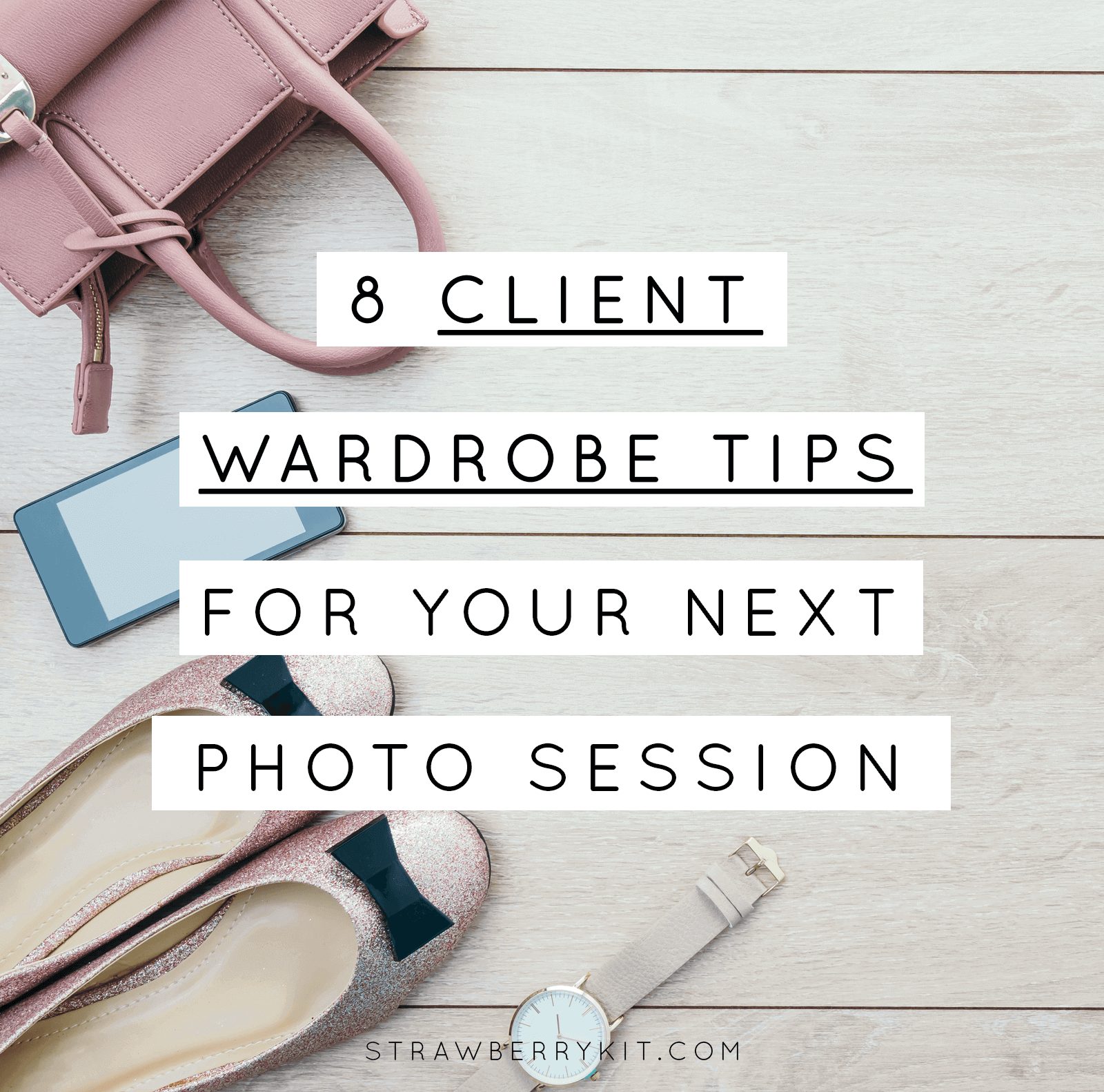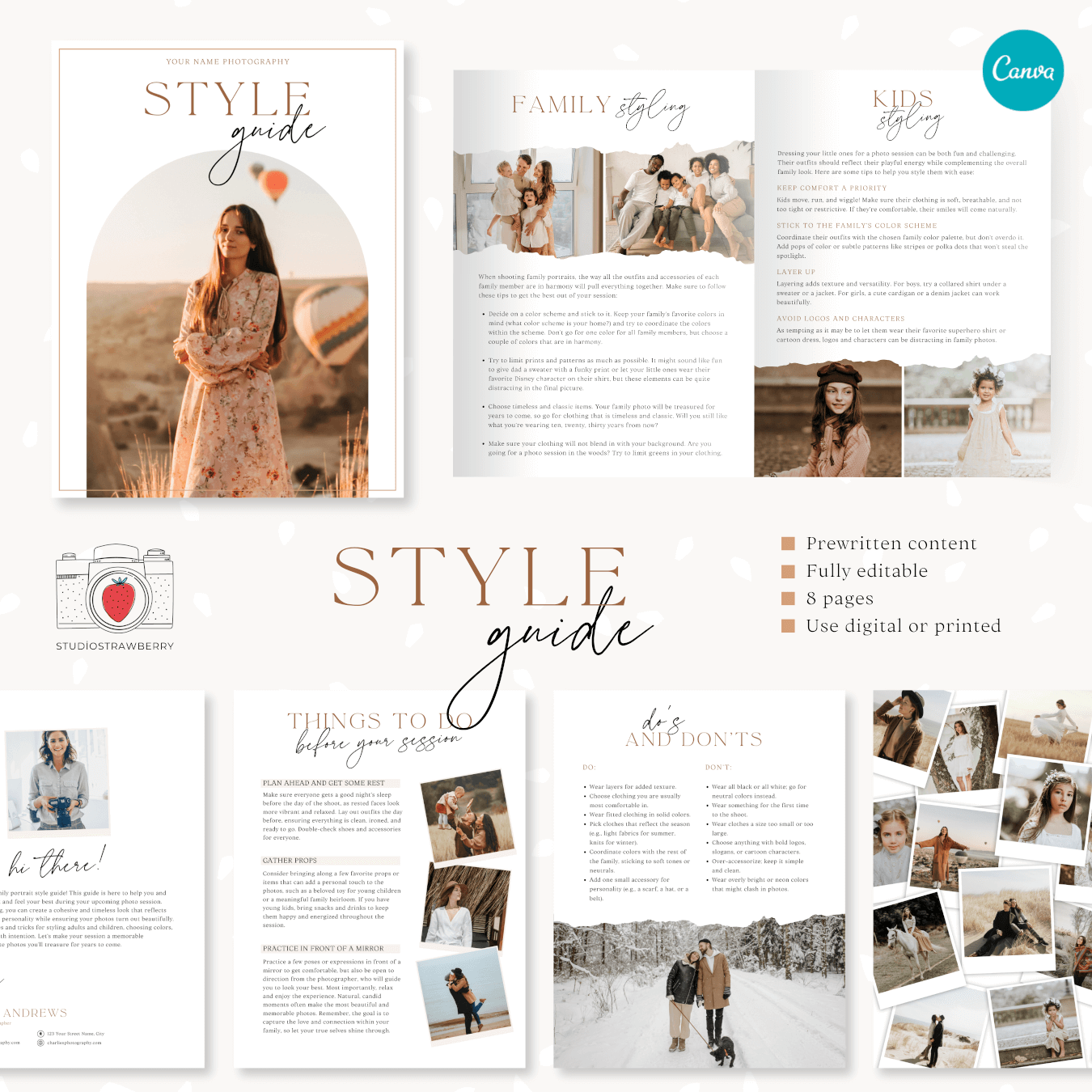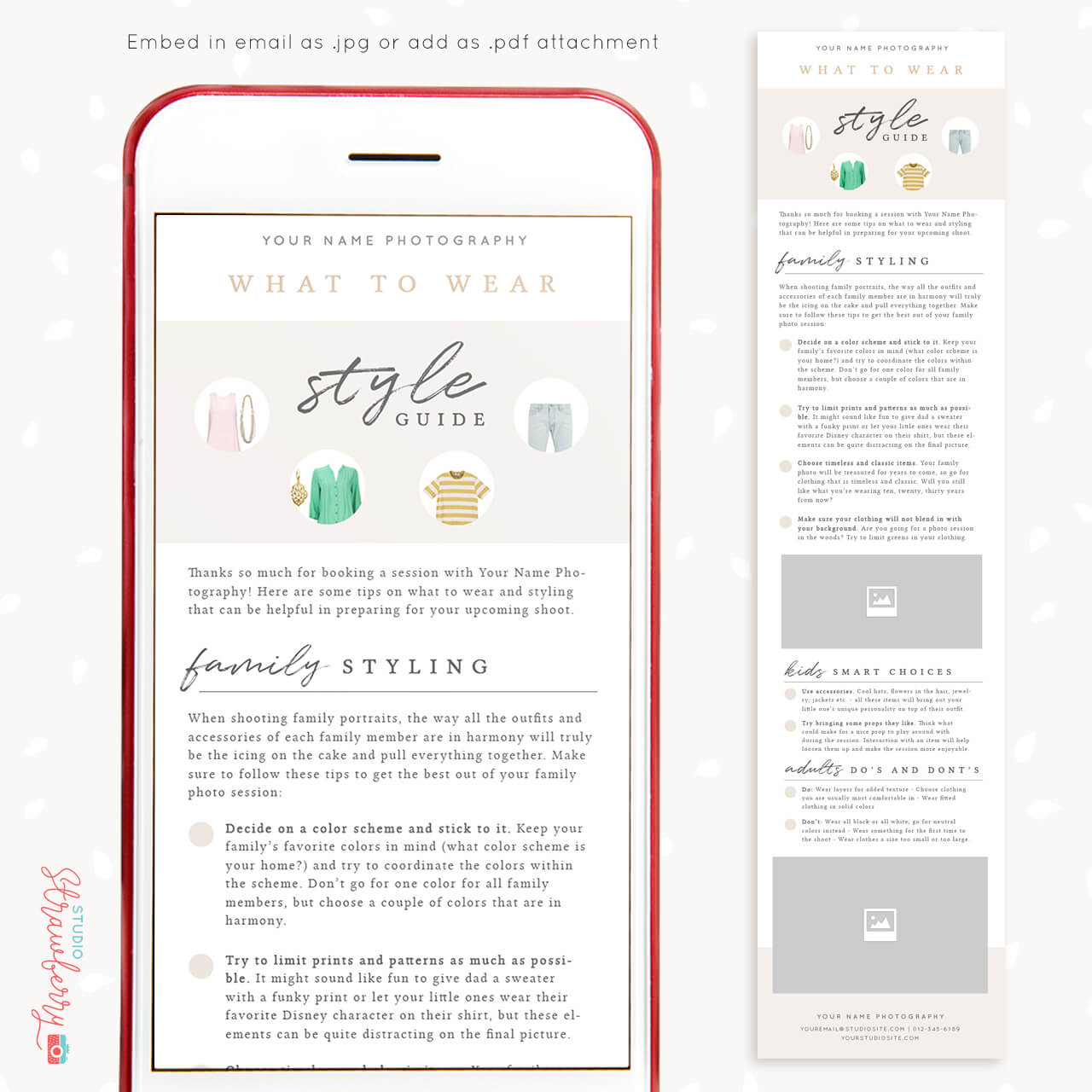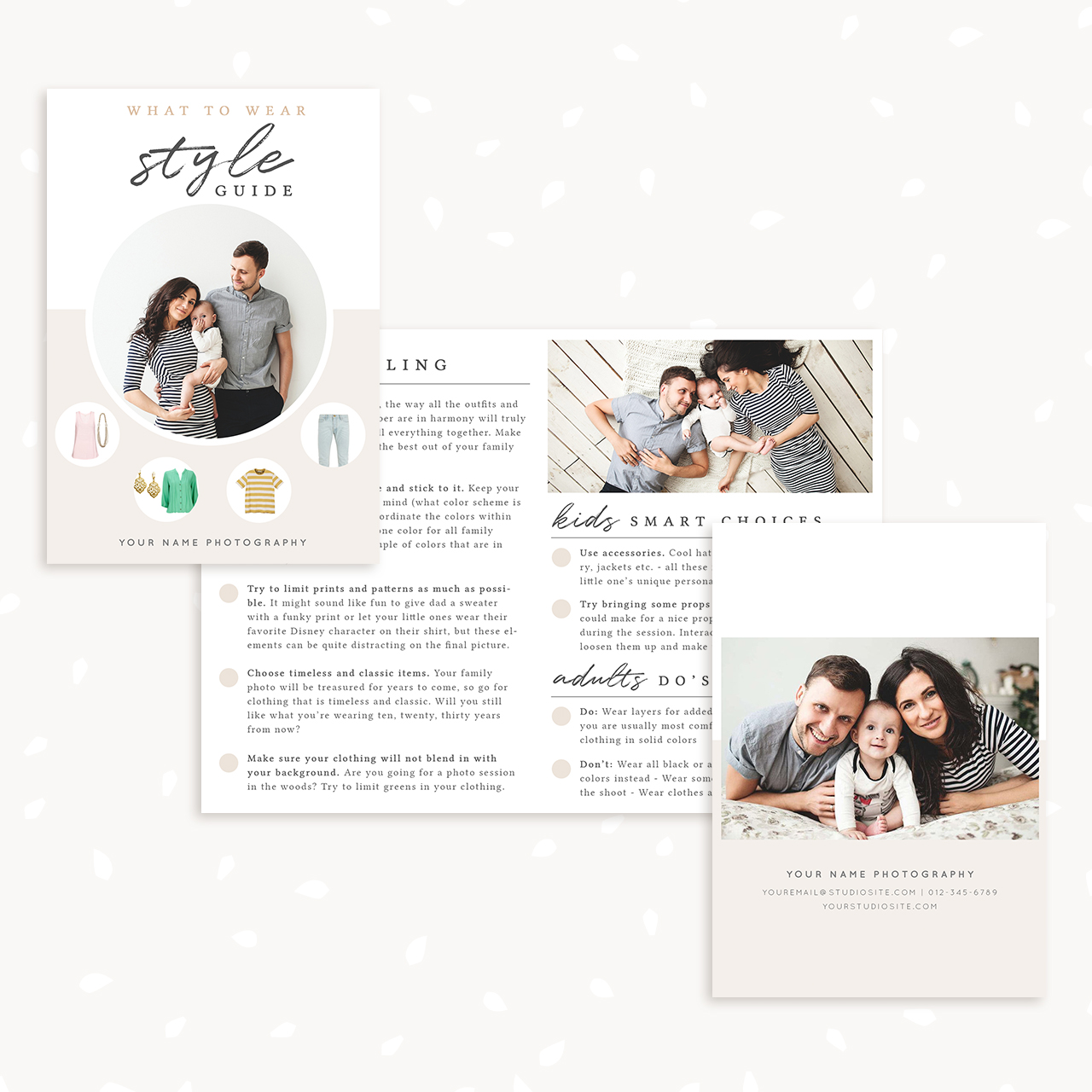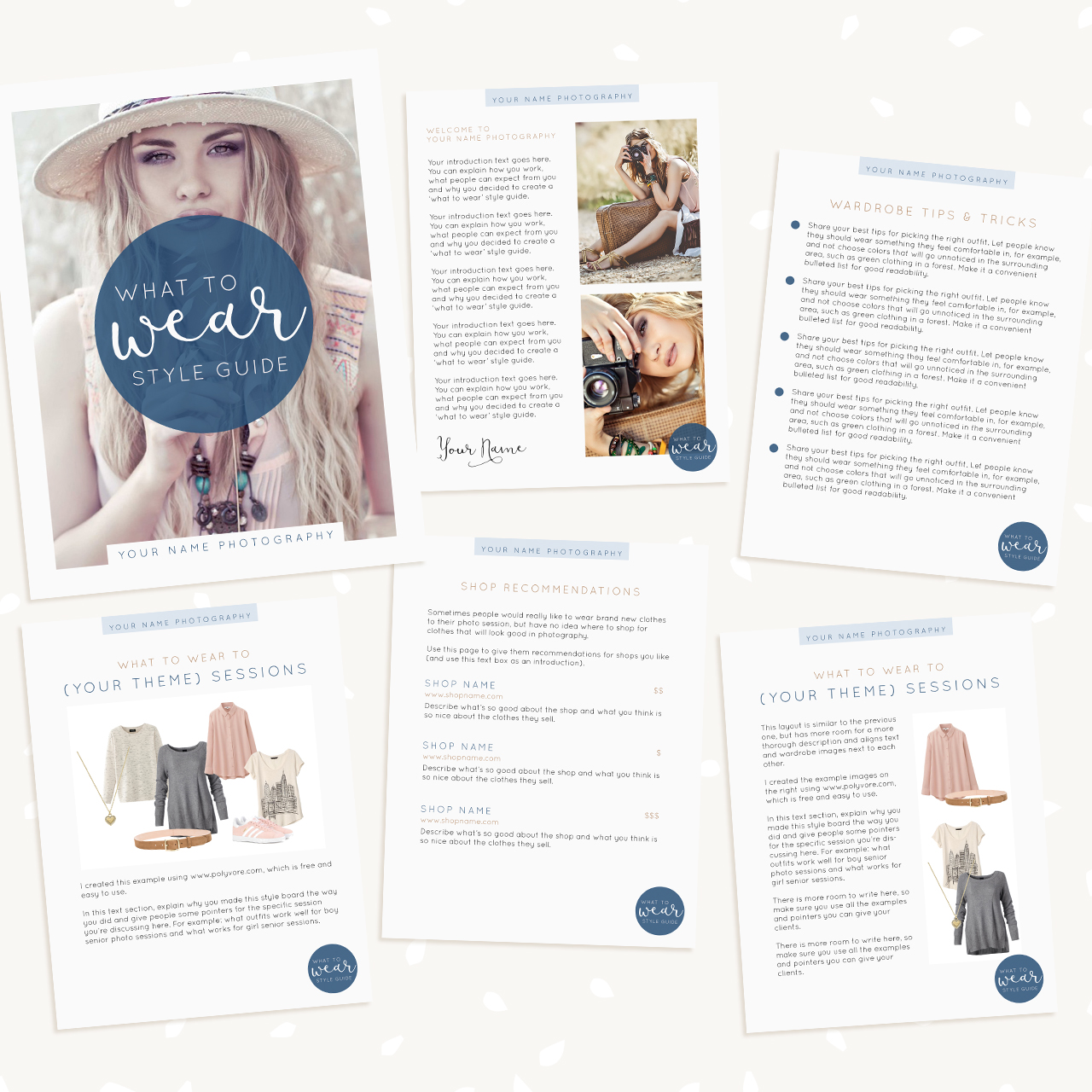Planning a successful photo shoot can be very demanding.
From the selected location and the surrounding decors to your equipment and how your subjects look and feel, you can never be too careful.
Nevertheless, there’s nothing that will stress out your clients more than… their wardrobe.
How people dress directly affects how they feel and how they pose.
Whether they are not comfortable with their clothes, they are not convinced that they look good, or they are not appropriately dressed, sweating or shivering, all these will affect the entire shooting, as well as the end product.
But as you already know, the best photographers always help their clients in every way they can.
From general, practical advice on things to do and things to avoid to personal counseling on what would look best on them, sharing your knowledge will be highly appreciated.
The following information should help you round up your client wardrobe counseling strategy. It will help you create a comprehensive what to wear guide you can send them to prepare for a shoot with you.
So read on, for more tips on how to ease your clients’ worries and help them feel comfortable with you:
1. Insist on meeting in advance, so you get to know them better
Whether you send them a pre-session questionnaire as a part of your what to wear guide or meet up with them for a live pre-session meeting, your goal is to discover their personal style and shooting preferences. Make sure that they understand how sharing all those details will help you set up the script for an amazing photography session. Once you make that clear, they should be happy to tell you:
What makes them feel comfortable?
What’s their favorite look?
Where do they shop for clothes?
Whether they prefer an urban scenery, with alleyways and vintage walls
Or perhaps they are after a greenery, wilder and more natural landscape
2. Let them know that you are available to validate their choices
After an initial discussion, when they actually start putting their clothes together or shopping, chances are that even more questions will arise. Encourage them to address those questions!
Tell them that they can email you, text you, send you photos with their wardrobe ideas for the coming session. And when you do offer your feedback, pay close attention to how you phrase the rejection of their choices.
They need to understand that it’s not that they made a poor choice (even if they did!), but rather not a suitable choice for this particular project. Something like: “That’s a very cute polka dot poncho and I see why it would look gorgeous on you! But I’m afraid it doesn’t really fit our intentions BECAUSE…” will do the trick.
After that, you will obviously have to come with a logical explanation that clears things out.
3. Encourage them to show their true individuality
Let your clients know that family pictures are one of the best moments to show off. Whether they try their favorite looks, put on some bold colors, prints or patterns that they normally wouldn’t dare to embrace, it’s their moment of freedom.
Nevertheless, the moment their “true personality” shows off a little too much, and their choices would rather damage the quality of your photographs, do not be afraid to encourage them (with the right explanations) to make some changes.
As a rule, in your what to wear guide you could advise them to:
- Refrain from wearing any fluorescent colors and opt for primary colors instead, such as blue (navy or royal), red (maroon or brick) and yellow (mustard).
- Avoid colors that will blend with the landscape (such as green when shooting in natural green spaces) and use them instead as details (a bow tie or a hair accessory, some beads or a belt, pants suspenders or earrings etc.).
- Have them pick a main clothing article and 2 or 3 main colors, from where you can build together a photo theme and encourage them to mix stripes with tweeds and plaids.
Eg: Whether it’s the mother’s blue navy dress or the father’s coral beach pants, you can build everyone else’s wardrobe from there, harmonizing everything together. Make that much-desired item the starting point of your theme.
4. Insist that they should pick clothes they feel good in
If they’re not comfortable with their choices, it will show in the photos and that’s the worst thing that can happen.
Ladies shouldn’t be forced to wear a dress because it’s more feminine if they feel and look awesome in a pair of skinny jeans.
High heels can always be replaced with some comfy sandals or flat boots.
A well-fitted t-shirt will always look better on a man who never wears stylish shirts.
As a rule, their clothes should not only make them look good, but also feel good. Photos always reflect a state of spirit, everything else – outfits included – is just details that enhance it.
And you don’t want those details to make your clients feel uncomfortable.
5. Select and share wardrobe practical tips from previous projects
Whether you had a client with an amazing fashion sense or you just worked hard and made someone look at their best, don’t let that experience go away. Ask your clients to let you share their wardrobe picks on your website, in your what to wear guide or on some of your social network accounts.
They will feel very good to hear that you are giving them as an example. At the same time, your future clients will be happy to get some down-to-earth inspiration of real wardrobe from real people, not just shiny collages from magazines.
6. Advise clients to consider the suggestions you offer on your website
Just the same, make yourself a source of inspiration by sharing links to online outfits or cute boutiques you come across. Anytime you research on purpose or accidentally find something that could use your clients, remember that sharing is caring and don’t forget to include it in your what to wear guide.
Clients can never have enough sources of inspiration and those small owners will be thrilled with you recommending their business (so it’s a great networking opportunity as well).
7. Invite your clients into your studio’s fashion corner
If you have your own studio, see if you can set up a little fashion corner by putting together different clothing items.
You could focus on children outfits and their parents will be delighted to discover you can offer them some options. A pair of cute little jeans with suspenders, for example, or a sailing hat. But don’t forget the grownups either – accessories could come in handy for them, so think of hats, scarfs, sunglasses, vests, belts, beads.
As long as you buy these gradually, your investment should be bearable, but your clients’ amazement will be unimaginable.
8. Make sure that they dress appropriate for the context
Dressing appropriately for the context could seem quite vague, but here’s what you should suggest:
- Wearing casual clothes when filming in nature, in a park, in a forest, on a lake shore, at the seaside etc;
- Going for more elegant clothes when shooting on the bustling city streets;
- Choosing clothes that won’t make them feel too hot or too cold;
- Wearing clothes that will give them a tailored look, even if it means choosing a smaller size than they normally do;
- Being prepared for any sudden weather change, putting together an outfit from several layers.
Layers are amazing. Not just because they allow them to add more colors, textures or patterns to their wardrobe, but also because they are versatile. If weather changes in the last minute, your clients can put extra layers or take them off. Tights, boots, scarfs, cardigans or slouchy hats work wonders.
Related templates
Try one of the following what to wear style guide templates to hand out or email to your clients so they are well prepared for their upcoming photo shoot.

